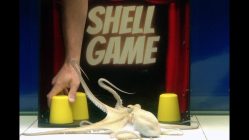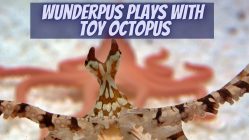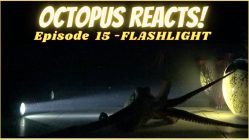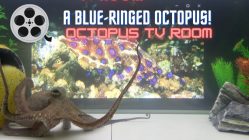
Vulcanoctopus hydrothermalis is the only octopus species currently known to inhabit hydrothermal vents. In fact, it is the only cephalopod endemic to the hydrothermal vents as far as we know.
What is a hydrothermal vent?
To put in plainly, the hydrothermal vent is a hot spring created when seawater encounters hot magma. Hydrothermal vents are located near underwater volcanoes or where two tectonic plates meet. When the cold seawater enters through a fissure on the seafloor and is heated by the hot magma, its reemerges in much higher temperatures (up to over 700° Fahrenheit!) and with a different chemical constitution. The very high pressure of the deep sea is the reason why the water does not boil is such extreme temperatures.
Scientists begun to explore the ecosystems around hydrothermal vents as recently as the late 70’s. To their amazement, the vents were home to many, previously unknown living organisms. Tiny microbes feed from the chemicals contained in the hydrothermal fluids and in turn, smaller organisms, such as tubeworms and shrimp, feed on these microbes. All organisms inhabiting hydrothermal vents needed to adjust their biological functions according to the high temperatures and chemical (even toxic) conditions.
Besides these unknown and complex ecosystems, hydrothermal vents are also the source of valuable mineral deposits.
Vent Octopus Facts
- Scientific Name : Vulcanooctopus Hydrothermalis
- Common Name: Hot Water Volcano Octopus, Vent Octopus
- Size: up to 184 mm (7.2 in)
- Weight: 45 g
- Lifespan: Unknown
- Found in: Pacific Ocean
- Sub-Order: Incirrina
- Discovered: 1998
- Scientific Name : Vulcanoctopus hydrothermalis
- Common Name: Pacific Ocean
- Size: up to 184 mm (7.2 in)
- Weight: 45 g
- Lifespan: Unknown
- Found in: Indonesia, Philippines, Northern Australia
- Sub-Order: Incirrina
- Discovered: 1998
The Vent Octopus is the only cephalopod endemic to the hydrothermal vents as far as we know. Being a deep-sea species living in such unique environmental conditions, it makes sense that it would develop many particular physical characteristics to adapt to its habitat.
—A Unique Deep Sea Octopus—

Vulcanoctopus hydrothermalis was first encountered at a depth of more than 2600 meters below the surface on the seafloor. Being a deep-sea species living in such unique environmental conditions, it makes sense that it would develop many particular physical characteristics to adapt to its habitat.
Vulcanoctopus hydrothermalis is a small-sized octopus, with a pear-shaped mantle of up to 56 mm long. Its body is muscular and semi-translucent, bearing no chromatophores. It also lacks an ink sac. The absence of chromatophores and ink sac has been noted in other deep-sea species as well (e.g. the Glass Octopus). The total darkness of the deep-sea renders these two defense mechanisms useless for the octopus.
The eyes of the Vent Octopus, though present, do not have an iris. Vulcanoctopus hydrothermalis did not react to the presence of light coming from submersibles, leading scientists to the hypothesis that it “sees” mainly through touch and smell.
Based on the data about the Vent Octopus’ anatomical features collected by the first specimens, scientists suggest that the Vent Octopus might be related to the deep-sea genus of Benthoctopus.
—Primary Observations about its Behavior—

As far as we know from primary observations, the Vent Octopus, like other deep-sea species such as the Glowing Sucker Octopus, can move in a way that reminds of a jelly medusa by pulsating its web. Researchers are discussing the possibility that this kind of locomotion is merely a reaction caused by the stress of being approached by a submersible.
Some specimens of Vulcanoctopus hydrothermalis were collected near colonies of giant tube worms although scientists were only able to confirm amphipods and crabs as its prey.
The study of the Vent Octopus led to the discovery of a new copepod species which is parasitic to this octopus.
Interestingly enough, when the first few specimens were collected, scientists found them all to be male. This fact led them to assume that there is probably some kind of spatial segregation of the sexes, with the males living in different depths from the females. Similar cases of spatial segregation of the sexes have also been noted in the Giant Pacific Octopus, the Patagonian Octopus, and the Combed Octopus.











